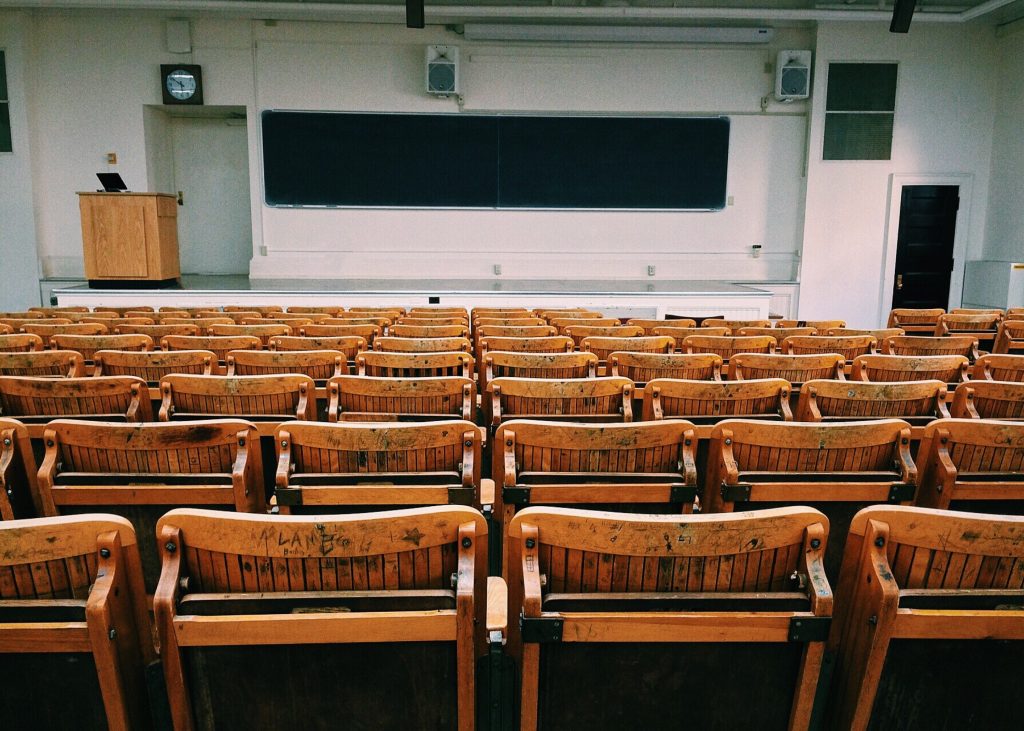Today’s society is immersed in a process of constant change, about all at a social and technological level; And as part of society, there is no doubt that In higher education it has to integrate all these changes.
They are currently being put in Between the classical methodologies (master class) provoked a crisis in training systems (1).
In addition, the new technologies of Information and Communication or ICTs have become a tool fundamental in the knowledge society, with them any person and in Any time can interact through the Internet, therefore, our Obligation, as a university professor is to know how to integrate these technologies in Benefit of learning.
Our ultimate goal as a professional teacher should be to accompany students in their learning process, Selection of information and filtering it to make it suitable for their formation (2) and cease to be mere transmitters of information.
We must Ensure that the university is a “learning institution” vis-à-vis the More general idea of seeing it as an “educational institution”.

What are the main METHODOLOGICAL RESOURCES described so far?
- The master class is the scenario in which a teacher transmits knowledge in a classroom to the entire group of students.
- The case method consists of the process of solving clinical cases specific to the profession. They are group activities that are resolved with the active participation of the teacher after the deliberation of the students.
- Project-based learning (PBL). It allows students to acquire knowledge and skills through the development of projects that respond to real-life problems. Based on a concrete and real problem, this methodology guarantees more didactic, effective and practical learning processes, and allows the student to develop complex skills such as critical thinking, communication, collaboration and problem solving. The teacher acts as a tutor who facilitates the learning process based on their metacognitive abilities (3).
- The skills lab is an area in which the student can basically develop communication and physical examination skills based on mannequins and robots simulators of real diseases. They are done in small groups.
- Flipped Classroom. In this pedagogical model, the traditional elements of the lesson taught by the teacher are reversed. Educational materials are studied by students at home and then worked on in the classroom (4). The objective: to optimize class time for the development of cognitive processes of greater complexity that favor meaningful learning (5).
- Cooperative learning. It is the set of teaching procedures that start from the organization of the class in small groups where the students work together, in a coordinated manner with each other, to solve academic tasks and deepen their own learning (6,7). This methodology is based on the ideas of the constructivist theory of learning.
- Gamification. It is the integration of mechanics and dynamics of games and video games in non-playful environments, in order to enhance motivation, concentration, effort, and other positive values common to all games.
The concept emerged from 2008 in the business world (8). However, it has become a trend that has been increasing in popularity and the study of its application has expanded to other areas (9). - Design Thinking. It is born from the practice of designers and their method of solving problems: They break down a problem, break it down into smaller parts, analyze them, think without limits together with other team members to find the right solution. Applied to education, this model makes it possible to identify more accurately the individual problems of each student, generate ideas, solve problems creatively and broaden the horizon in terms of solutions (10, 11).
- Thinking Based Learning. Teach them to contextualize, analyze, relate, argue, turn information into knowledge and develop thinking skills beyond memorization. The objective, therefore, is not only that students acquire the knowledge of the syllabus, but also that they develop skills and abilities related to thinking and can put them into practice in the future autonomously, for any other topic, concept or challenge (12).

The application of new emerging teaching methodologies in university education favors the learning and sedimentation of knowledge, while probably favoring durability in the medium and long term. Robot-assisted
There should therefore be an urgent need to reinvent teaching practice and teaching methodologies, to adapt them to new contexts and thus guarantee significant learning. Students must be the protagonists of a system that is gradually overcoming the traditional paradigm where the teacher is the center of knowledge.
The new methodologies Teaching is a fact and are changing educational environments across the globe. world. They have been created by the teachers themselves and it is imperative to consider them and continue to formulate new proposals that bet on the renewal and improvement of Current educational processes, also in the university environment.
Begoña Juaneda Castell
Professor Universitat Internacional de Catalunya
Urology Coordinator at the Universitat Internacional de Catalunya
CPT Surgical Practice Hospital Universitari de Granollers-UIC
REFERENCES
- Corell, A., Sanz Díez, L., Gallego Lama, V., García Vergara, A., Rubia Avi, B., Aragón Vasco, J.C., … Cardeñoso Payo, V. (2015). Project “Know, Extend”. Realization of knowledge pills in the University of Valladolid. The emergence of new didactic methodologies Emerging economies are causing tectonic plate movement in the foundations Educational.
- Salinas, J. (November 2004). Teaching innovation and use of ICT in teaching University. Obtained from http://www.uoc.edu/rusc/dt/esp/salinas1104.pdf
- JJ Solaz-Portolés, VS López (2011). Based learning in problems in Higher Education: a necessary methodology in training of teachers. Didactic journal of experimental and social sciences. University of Valencia.
- Jonathan Bergman, Aaron Sams (2016). Give him the Back to your class. Library Educational Innovation. SM Editions.
- Prieto Martín, Alfredo (2017). Flipped Learning. Apply the Reverse Learning Model. Narcea.
- Panitz, T., & Panitz, P., (1998). Encouraging the Use of Collaborative Learning in Higher Education. In J.J. Forest (ed.) Issues Facing International Education, June, 1998, NY, NY: Garland Publishing
- Johnson, D. W, and R. Johnson (1989): Cooperation and Competition: Theory and Research, Edina, Minnesota, Interaction Book Company.
- Deterding, Sebastian, et al. (2011). Gamification: Toward a Definition . Retrieved 15 February 2014. «Gamification is the use of game design elements in non-game contexts.” Trad: “Gamification is the use of the elements of I play in non-playful contexts.”
- Romero Sandí, Hairol; Rojas Ramirez, Elvin (August 2013). Gamification as a participant in the development of B-learning . Retrieved 15 February 2014. “You can get people involved, motivate, concentrate and strive to participate in activities that were previously They could be classified as boring and that with gamification they can become creative and innovative”.
- Razzouk, R. and Shute, V. (2012) “What is design thinking and why is it important?” Review of Educational Research, 82, 330–348
- Bower, M. (2017) Design of Technology-Enhanced Learning, Chapter 6: “Design Thinking and Learning Design”. Emerald Publishing, UK.
Schwartz, B. M., & Gurung, R. A. R. (Eds.). (2012). Evidence-based teaching for higher education. Washington, DC, US: American Psychological Association. http://dx.doi.org/10.1037/13745-000

